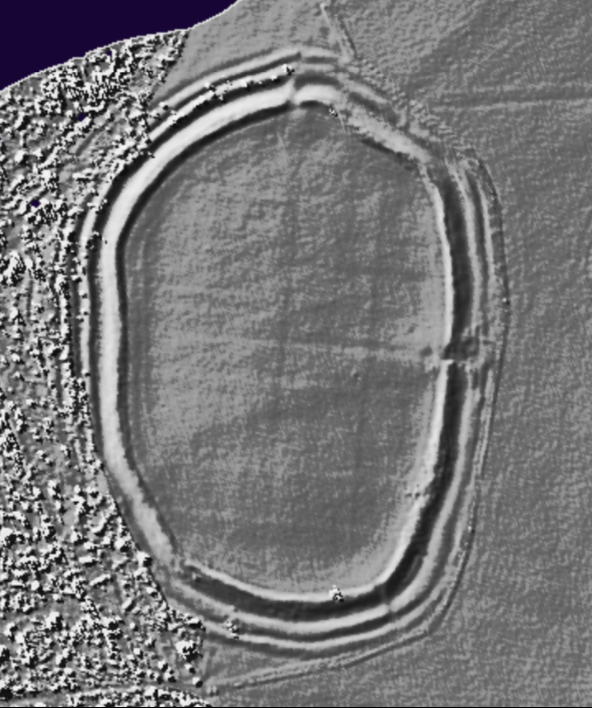
Image Credit: Environment Agency copyright and/or database right 2015.

Image Credit: Environment Agency copyright and/or database right 2015.

View across center of camp

Banks and ditch’s

Approaching from the south

Cherbury Camp from the air (date unknown)

Section of Cherbury showing the 3 bank and ditch defense. (taken 2003)
I visited this site in earlier this summer...
Cherbury is a iron age fort that is situated (geographically) on reasonably level ground. Compared with others in the area (Uffington, Segsbury et al), it is not a hillfort. Its position might be thought strange (in the middle of level ground and therefore easy to attack), but I suspect its siting is in opposition to the Atrebates hillforts up on the ridgeway and as such offers good views (on a clear day) to Uffington and the Berkshire downs.
Cherbury has a triple ditch and bank surrounding it and is oval in shape, covering an area of about 9 acres. In a ‘Guide to Prehistoric England’ by ‘Nicholas Thomas’ (batsford 1976) it is described as being probably built in the 5th-4th century BC and being abandoned in the 1st century BC.
Defending Cherbury from attackers may at first look difficult, but it is hard to imagine what an impressive triple bank and ditch plus high wooden fence might have looked like. The triple ditches are still visible and can be made out. The final rampart still has some remains of stone in it (just under the turf) and so some low stone wall must have been present to add to the defence. Surrounding Cherbury is a number of small streams. The land around the camp is very marshy with a clay subsoil and I suspect this might have been put to the defenders advantage in the siting of the fort. If surrounded by marshy ground, then charging the fort by would have been extremely difficult, wetheer on foot or horse back. Being bogged down in front of the camp would have made you a very easy target for missle fire from the defenders. Look out for the marsh grass if you visit, you’ll see what I mean.
The size of the site is impressive, and although rarely visited, is definately worth a visit – if for no other reason, than to see a triple ditch and bank defending it. If you are in the area visiting Uffington or Segsbury, then I recommend a detour to Cherbury.
Francis Grose’s 1787 book “The Antiquities of England and Wales” mentions that “near Denchworth is Cherbury castle, a fortress of Canute.”
I found that this story is connected with the Pusey Horn, an object which is now in the Victoria and Albert museum. collections.vam.ac.uk/item/O132646/the-pusey-horn-oil-painting-unknown/
The Danish Canute was King of England about a thousand years ago. He and his army were camping near to Pusey, at Cherbury. The Saxon army was not far away, and a local man ran to warn Canute. For the tip-off he was given this horn, and all the land that it could be heard from – it paid off because Canute’s army won the ensuing battle.
Pusey Horn and Cherbury Camp Legend
“The Excavation of Cherbury Camp, 1939 – an interim report” by J S P Bradford. From Oxoniensia volume V.



















































